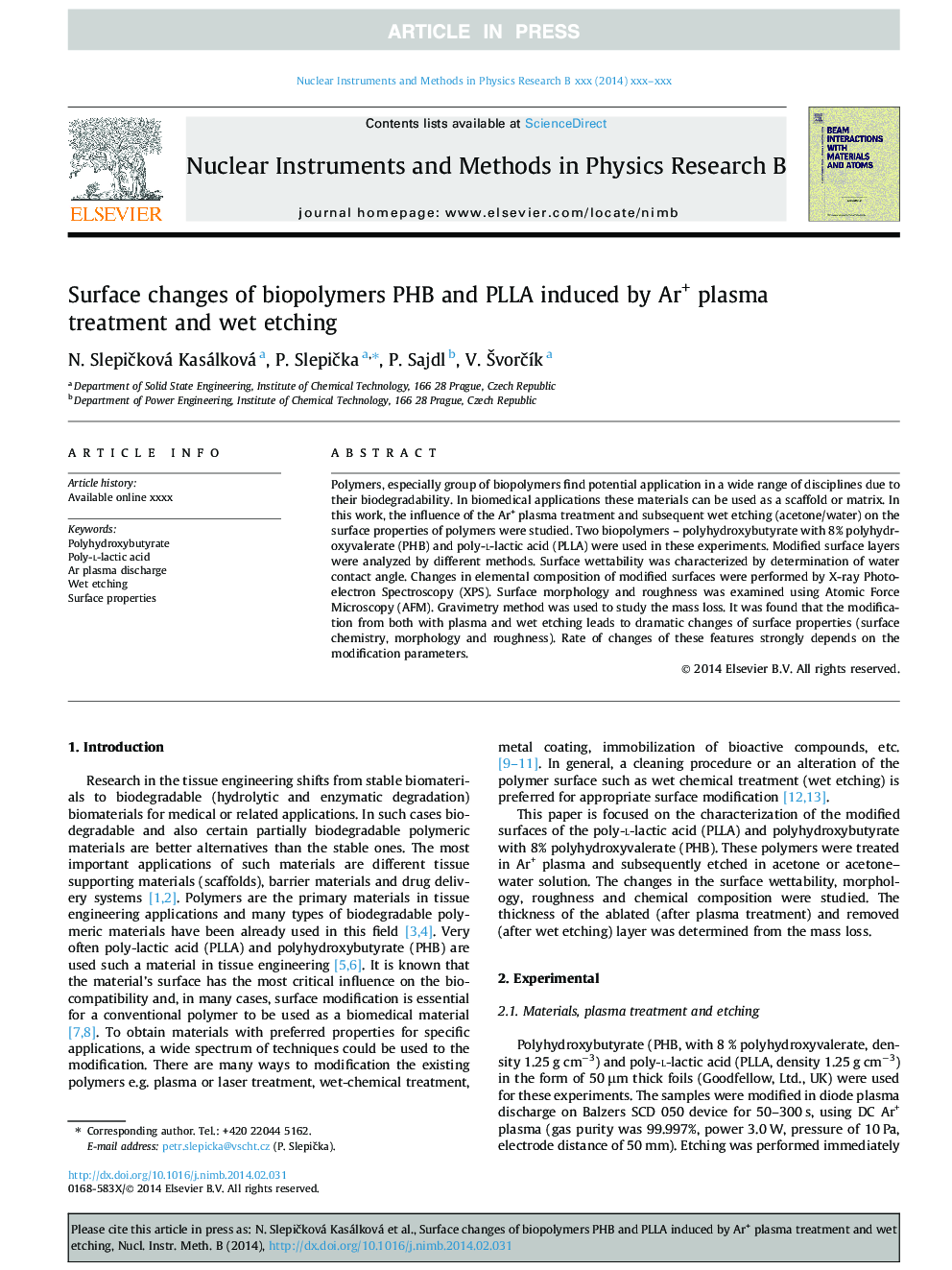| Article ID | Journal | Published Year | Pages | File Type |
|---|---|---|---|---|
| 8041330 | Nuclear Instruments and Methods in Physics Research Section B: Beam Interactions with Materials and Atoms | 2014 | 5 Pages |
Abstract
Polymers, especially group of biopolymers find potential application in a wide range of disciplines due to their biodegradability. In biomedical applications these materials can be used as a scaffold or matrix. In this work, the influence of the Ar+ plasma treatment and subsequent wet etching (acetone/water) on the surface properties of polymers were studied. Two biopolymers - polyhydroxybutyrate with 8% polyhydroxyvalerate (PHB) and poly-l-lactic acid (PLLA) were used in these experiments. Modified surface layers were analyzed by different methods. Surface wettability was characterized by determination of water contact angle. Changes in elemental composition of modified surfaces were performed by X-ray Photoelectron Spectroscopy (XPS). Surface morphology and roughness was examined using Atomic Force Microscopy (AFM). Gravimetry method was used to study the mass loss. It was found that the modification from both with plasma and wet etching leads to dramatic changes of surface properties (surface chemistry, morphology and roughness). Rate of changes of these features strongly depends on the modification parameters.
Related Topics
Physical Sciences and Engineering
Materials Science
Surfaces, Coatings and Films
Authors
N. SlepiÄková Kasálková, P. SlepiÄka, P. Sajdl, V. Å vorÄÃk,
